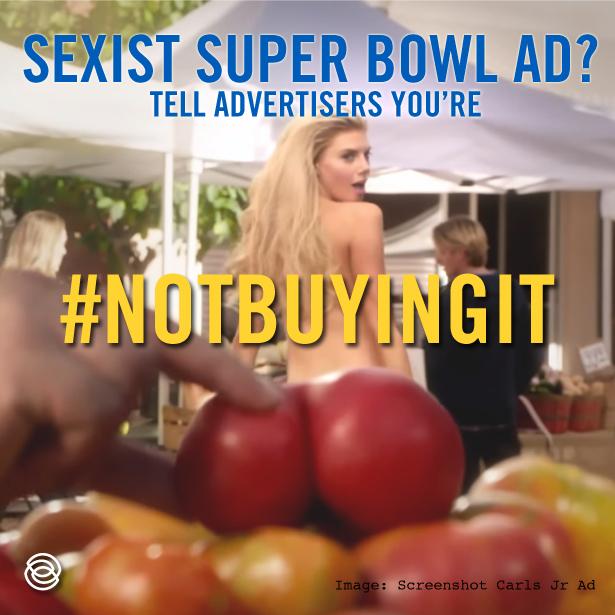
Picture your ideal woman. Do you imagine a pretty face, beautiful
dress and flawless hair? What you may forget
to consider is a vibrant personality, powerful attitude and the well-nature of
a person. These are qualities commonly associated as part of the ‘package
deal.” What scares me is that they are perceived so minimal, insignificant, and
temporary, associated to the whole image of beauty. The physical attributes of
women are represented most prominently by models that exemplify these values of
themselves most. “Through advertising,
the face becomes a mask (something you put on) and the body becomes an object”
(Cortese 55).
Let’s say you take off your make-up for a second, put on
your fat pants or God forbid, get old! You’re undesirable now? There is a
constant struggle for women to reach an unattainable goal of perfection. And the more effort a woman puts into
attempting to reach a desirable portrait of beauty will reflect in a depressive
state encountered by anyone who is unsuccessful. Ads for Covergirl
portrayed cosmetic privileges for women who suddenly became insecure people
without this very mask to shield them.
This negative affect on women increased revenue in stores but at the
cost of every woman reliant on their product.
And it is because society accepts that, for which it continues. The
message promoted by advertising campaigns is extremely detrimental to how our
society thinks as a whole more so than the individual gain from the use of their
product. That’s the point. You would think it gets redundant, people
looking sexy to promote a false hope, but it doesn’t. As long as people continue to support and
accept these images, consumerism will last.
The feminist movement challenged beauty industries exposing the “beauty
myth.” Unsuccessfully, they were countered by an increase in commercial beauty
images exposed to women across the world.
“While the masculine gender role is valued, the feminine
counterpart is disregarded or devalued”(Cortese, 53) If you open up the front
page of a Sports Illustrated Magazine geared towards men the image of a woman
in a bathing suit appears on the cover page.
This is the image associated with their magazine although the woman is
completely irrelevant to any of the articles concerning sports news since it is
a sports magazine, not a fashion magazine. “Women are mere “beauties” in men’s culture so
that culture can be kept male” (Wolf, 59).
The Super Bowl is notorious for selling the idea of women as
sex objects attracted to materialist products. Again, in a market that appeals
to men, women are used as bait to pleasure the male experience during the
game. This is a representation of our
culture wherein ”men look at women, and women watch themselves being looked at”
(Wolf, 58) Unfortunately, some women embrace this by taking advantage of these self-exploiting
opportunities, like working at Hooters, a low-class restaurant often
conveniently mistaken for a show girls joint.
Women who work here are selling food, but what is more attractive to the
customers are not the items on the menu.
Women exploit their sexual appeal to make an honest living but in doing so
they completely disregard themselves as more than objects and they misrepresent
the worldwide perception of women. In
addition, ads that depict women working at Hooters also convey a very specific
type of woman, light-skinned, blonde, tan, curvy and white. It is very rare that you will find a black
woman representing Hooter’s. This corporation is distributing the notion that a
white woman is more desirable than a black woman. Is that why Beyonce keeps getting lighter? “The
perfect provocateur is not human; rather, she is a form or hollow shell
representing a female figure. Accepted
attractiveness is her only attribute. She is slender, typically tall and long
legged” (Cortese, 54) That superficial appeal to look beautiful and empty
almost like this desirable attraction set in stone for women. Maybe not, the
kid’s doll, Barbie, which emulates physical proportions of an unrealistic body
type consequentially seeps into the subconscious of the child who interacts
with the doll and subsequently, they attach this as an important value to
themselves.
Women’s magazines for over a century have been one of the
most powerful agents of changing women’s roles, and throughout that time-today more
than ever-they have consistently glamorized whatever the economy, their
advertisers, and, during wartime, the government, needed at that moment from
women” (Wolf, 64). Yes, now the very
advertisers that promoted self-consciousness and insecurities since existence,
are presenting alternative representations that provide a healthier and more
optimistic approach the way women see themselves and to even how men do. Covergirl, a product that sells “cover-up” of
all companies was one to promote self-confidence in women in a #GirlsCan
campaign which conflicts with every other message they have delivered before to
“sell” confidence. Always, a pads
company, demonstrated the truth about adult perceptions of themselves, more
specifically women, and then astounds the viewers with the contrast to little
girls showing us how a real woman acts. The
most awakening scene in this #likeagirl campaign is that little girls thinks
higher of themselves than they tend to after puberty. This advertising strategy outlines that there
are many things that need fixing in the media and the way in which this ad was
distributed was during the Super Bowl, the most testosterone based atmosphere. Even in media when we see role reversal
themes we realized how engraved in minds some of these stigmas can go. The more
media we see delivering messages portraying women like they rightfully should,
the higher regards we will have for these messages in accepting them as true as
we perceived advertisements.
No comments:
Post a Comment